If you’re not planning to quit your job, do you even have one?
Jokes aside, the employee turnover rate in the current job market is abysmal. In March 2022 alone, 4.5 million people quit their jobs in the USA. And according to a PwC Global Survey, one in five workers plan to resign in 2022.
The press calls this the Great Resignation, remote advocates claim it’s the Great Reevaluation, and recruiters stick to yet another term – the Great Talent Re-Shuffle.
Whichever term you like more, the sad reality is that employees leave their jobs at unprecedented rates. And needless to say, a high employee turnover rate is a silent growth killer for any business.
Worried you might lose your best talent?
Then stick around, as in this article, we unpack:
- the definition of employee turnover rate
- the formula for calculating employee turnover rates
- the common reasons for employee turnover
- ideas on how to improve employee retention
What is the employee turnover rate?
The employee turnover rate is the number of people you hired and who left your organization within a specific timeframe. The employee turnover formula includes dismissals, retirements and resignations but does not include internal mobility transitions, such as getting a promotion or moving to another position.
Most companies measure annual and monthly employee turnover rates to better grasp the organization’s retention performance. Check the next section for a turnover calculation formula for both rates. 👇

Naturally, your employee turnover rate should be as low as possible for several reasons.
First, it costs quite a bit to have employees leave you.
As we’ve mentioned in one of our previous articles, finding a direct replacement for an employee can cost 50-60% of their annual salary, with the total amount estimated at 90-200% of the yearly salary for the position.
In other words, if you hire a developer at $100k per year and they leave you after a few months, this can cost you more than $180k. Ouch!
Then, there is the issue of productivity.
Once you hire someone, it will take several months until they’re fully onboarded and become productive in their role. Research suggests that employees decide whether or not they’ll stay at an organization or begin looking for a new job during the first six months of the new job.
This means that during the first six months, you’re investing time and team resources into training the new employee at a high risk of attrition. And only once that threshold is crossed, the new hire starts contributing to the company’s bottom line. Whether they leave you before or after they start becoming fully productive, the damage can be pretty devastating.
And finally, employee departures can hit team morale pretty hard.
When a well-liked employee hands in their resignation, it causes a ripple effect across the entire team.
Managers can experience a mix of emotions. There’s fear about the team’s reaction, frustration about inevitable recruitment costs and to-do’s, and the emotional hurt caused by public rejection—quite a rollercoaster.
On the other hand, the rest of the team can experience concern and even grief over losing a valued colleague. How the organization responds to and handles an employee’s departure can be the difference between one employee leaving and a turnover contagion (also known as quitting en masse).
According to this Linkedin poll, seeing a coworker leave motivates others to consider whether the grass is greener elsewhere. Voluntary turnover should be both a signal and an alarm to the company’s HR department.
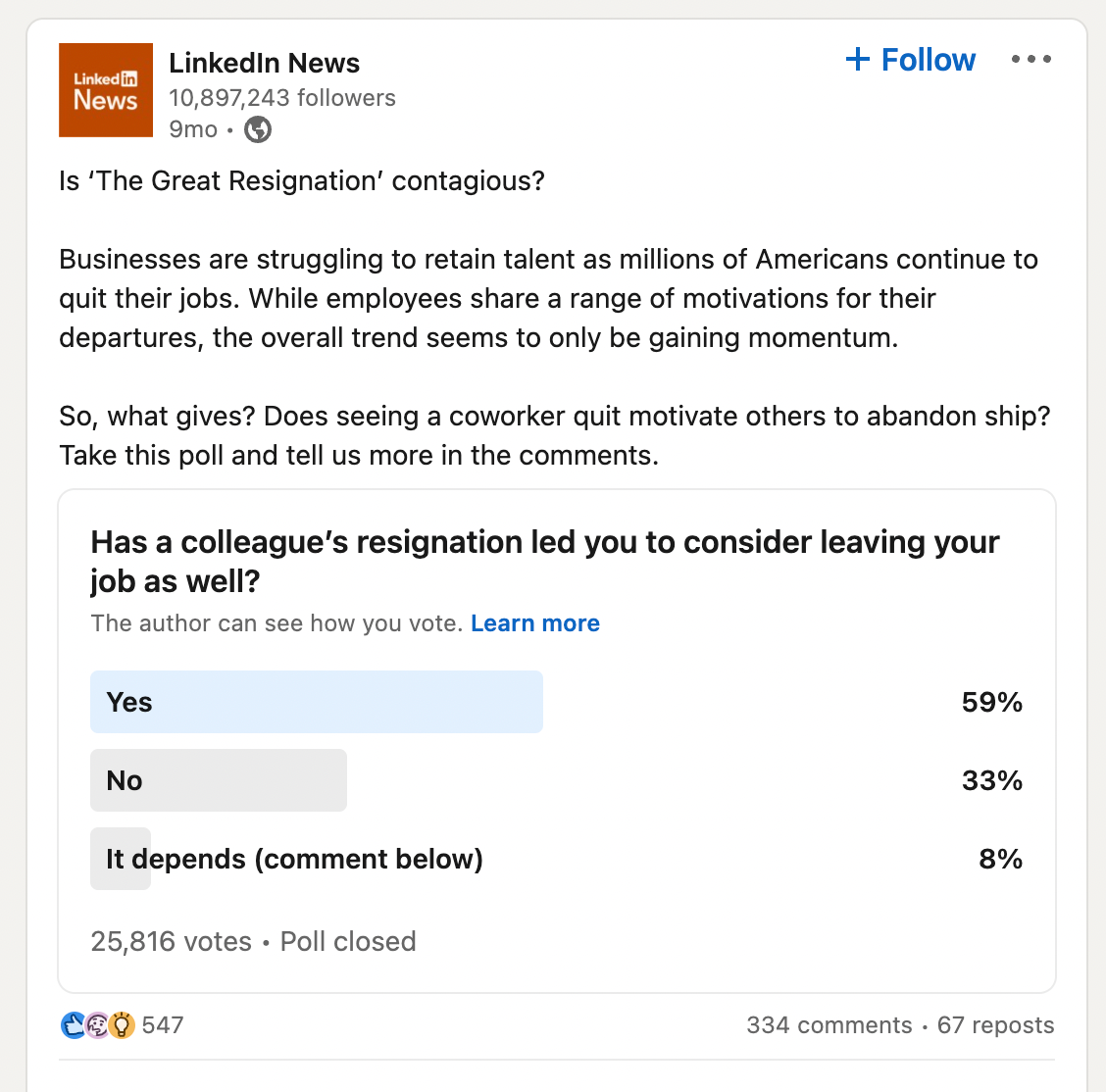
All in all, employee turnover is a vital metric for any business. If you don’t measure employee turnover rates yet, check out these step-by-step instructions for turnover calculations to get started quickly.
Voluntary Employee Turnover vs Involuntary Turnover: What’s the Difference?
Let’s define the terms:
Voluntary turnover
Voluntary turnover occurs when an employee leaves on their own accord instead of being fired or made redundant.
Voluntary turnover is not always bad, as there might be various reasons motivating the decision: relocating, changing career path, going back to studying, or transitioning to a different role. But it can also result from more worrying reasons, such as poor management, low job satisfaction, poor work-life balance, etc.
Involuntary turnover
Involuntary turnover is when the organization decides to dismiss an employee.
This may take several forms – from mass layoffs to company restructuring to individual employee termination. Involuntary terminations might result from poor performance or a company policy breach.
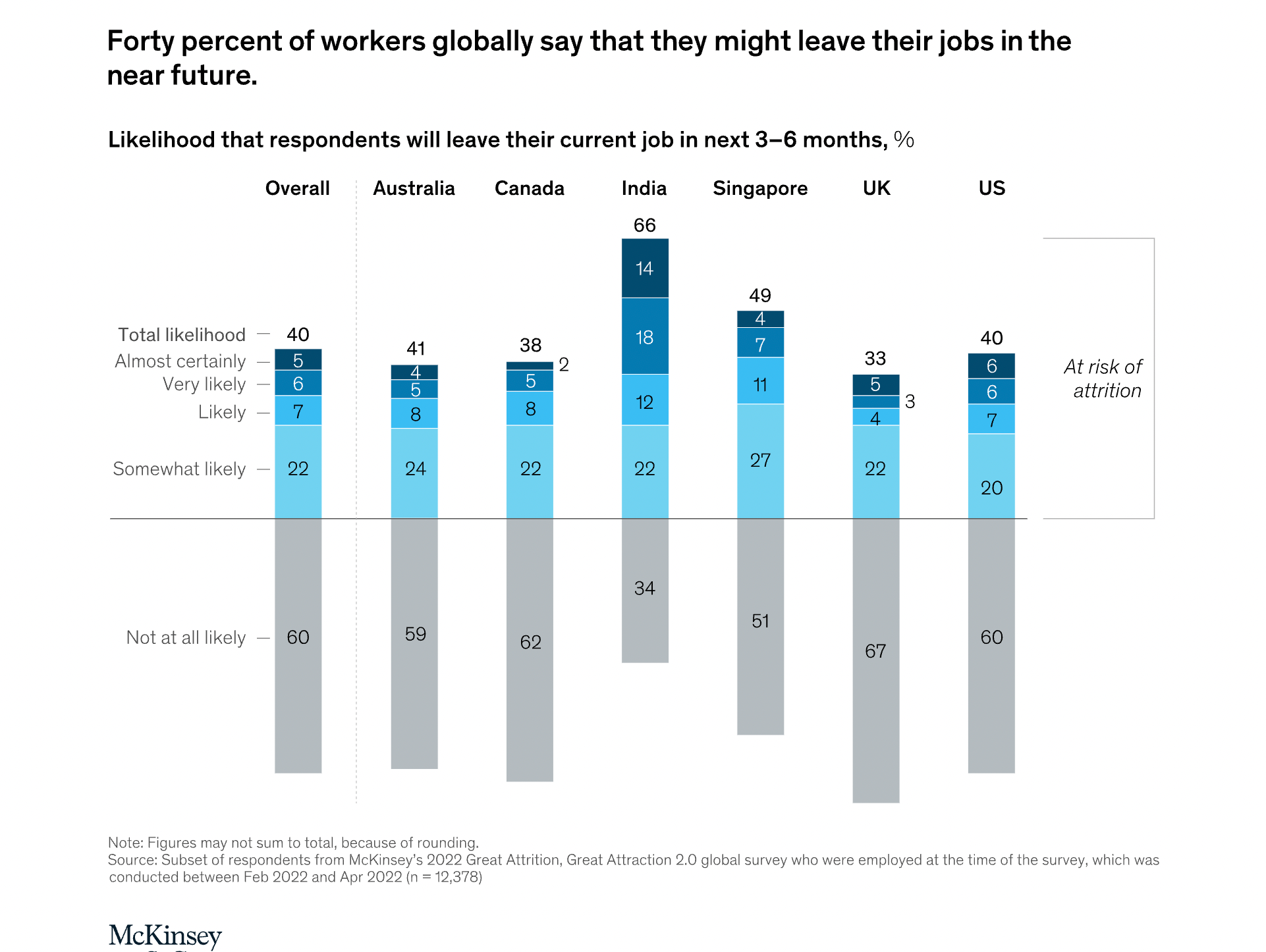
What’s a high employee turnover rate?
According to a recent LinkedIn study with over half a billion participants, the average employee turnover rate across industries is 10.6%. The unlucky winner at the top of the list is the Professional Services industry, with a turnover rate of 13.4%, followed by Tech and media (12.9%).
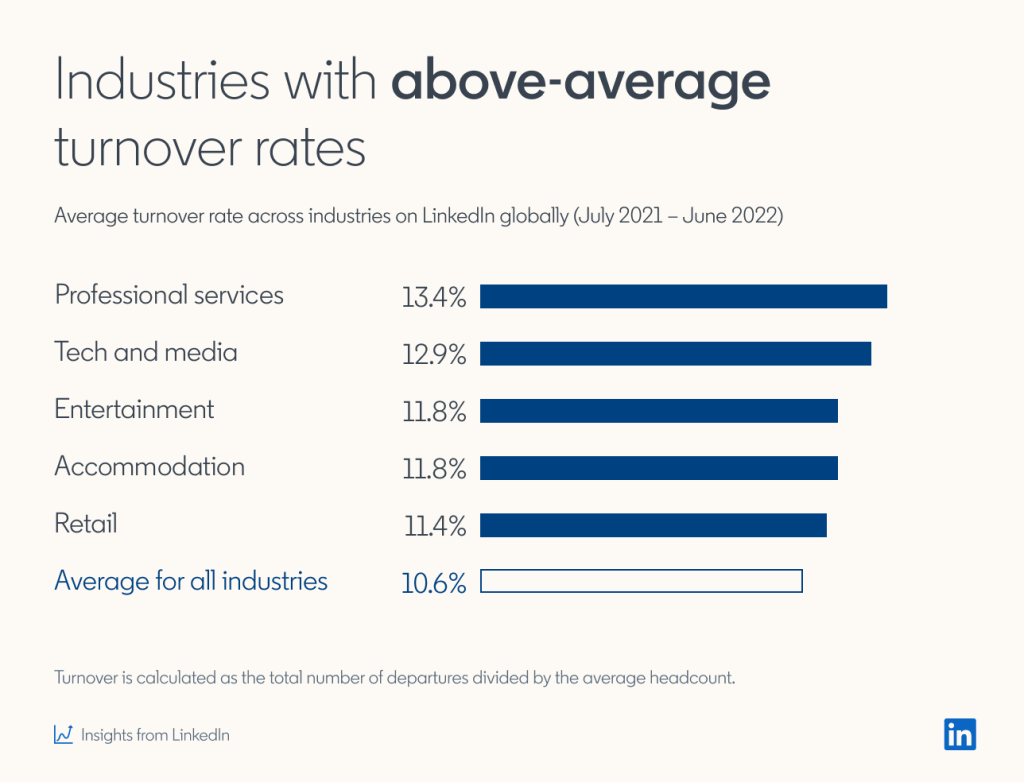
While Professional Services traditionally have high turnover, the tech industry has been at the top of the list for years. By diving deep into the results, you can see some positions which have incredibly high turnover rates, such as HR roles (14.6%), Research specialists (13.1%) and Product professionals (13.0%). These results can be attributed to the high demand for technical skills and increasing wages.
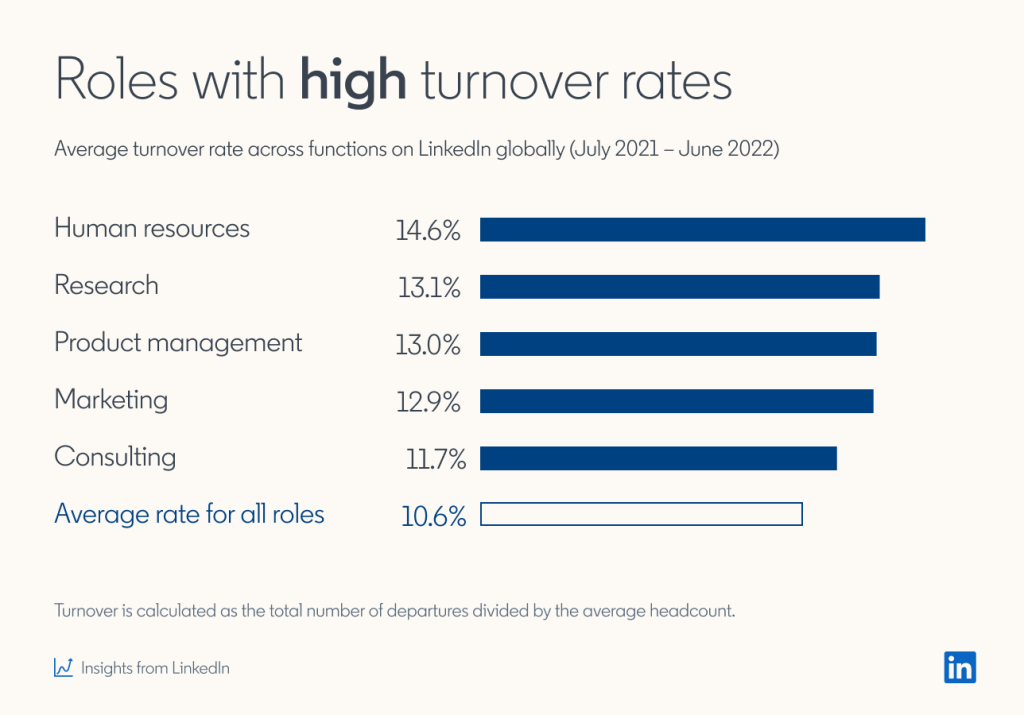
So, what’s a good turnover rate?
In short, anything below the national and industry average is a good figure to aim for.
As for the longer answer – it depends on many factors. Your industry, the role you are hiring for, and the size and structure of your company.
Ultimately, your goal should be to keep the employee turnover rate as low as possible and above industry standards. And the best way to curb employee turnover is by:
The formula for tracking the overall annual turnover rate
Here’s an example.
If you’ve started the year with 100 people, ended it with 90, and saw 20 people leave your business in that time, your turnover rate will look like this:
The formula for tracking the monthly employee turnover rate
The formula for tracking the new hire turnover rate
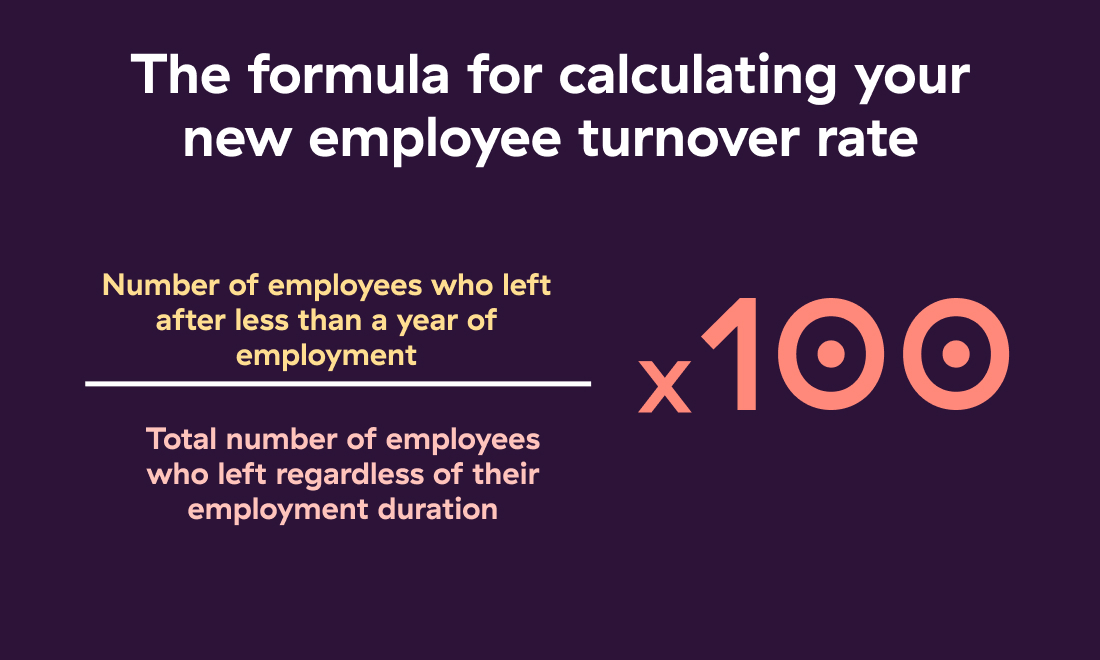
….and understanding the reasons why undesirable turnover occurs in the first place.
For those, keep on reading.
6 Reasons why you might be losing employees
While some parts of high turnover rates can be explained by the industry (relying on temporary workers or fierce competition for talent), there are cases when something else is the underlying cause for employees leaving you.
Here are some common reasons why your employee turnover rates might be higher than you’d like them to be.
1. The most talented employees leave because of zero career growth opportunities
One of the most common reasons for staff turnover is a lack of opportunities for professional development.
While many companies list it as a perk in their job ads, very few actually walk the walk and give their employees a chance to get a promotion and move up the ranks. In fact, only 25% of respondents in one research say they have enough opportunities to grow within their roles.
If your employees are in the same position for a while, without a chance to prove themselves, they are likely to seek another place where they can advance in their careers. Studies have shown that employees don’t have to be promoted to help increase retention rates – lateral moves are just as effective at making employees happy in their jobs.
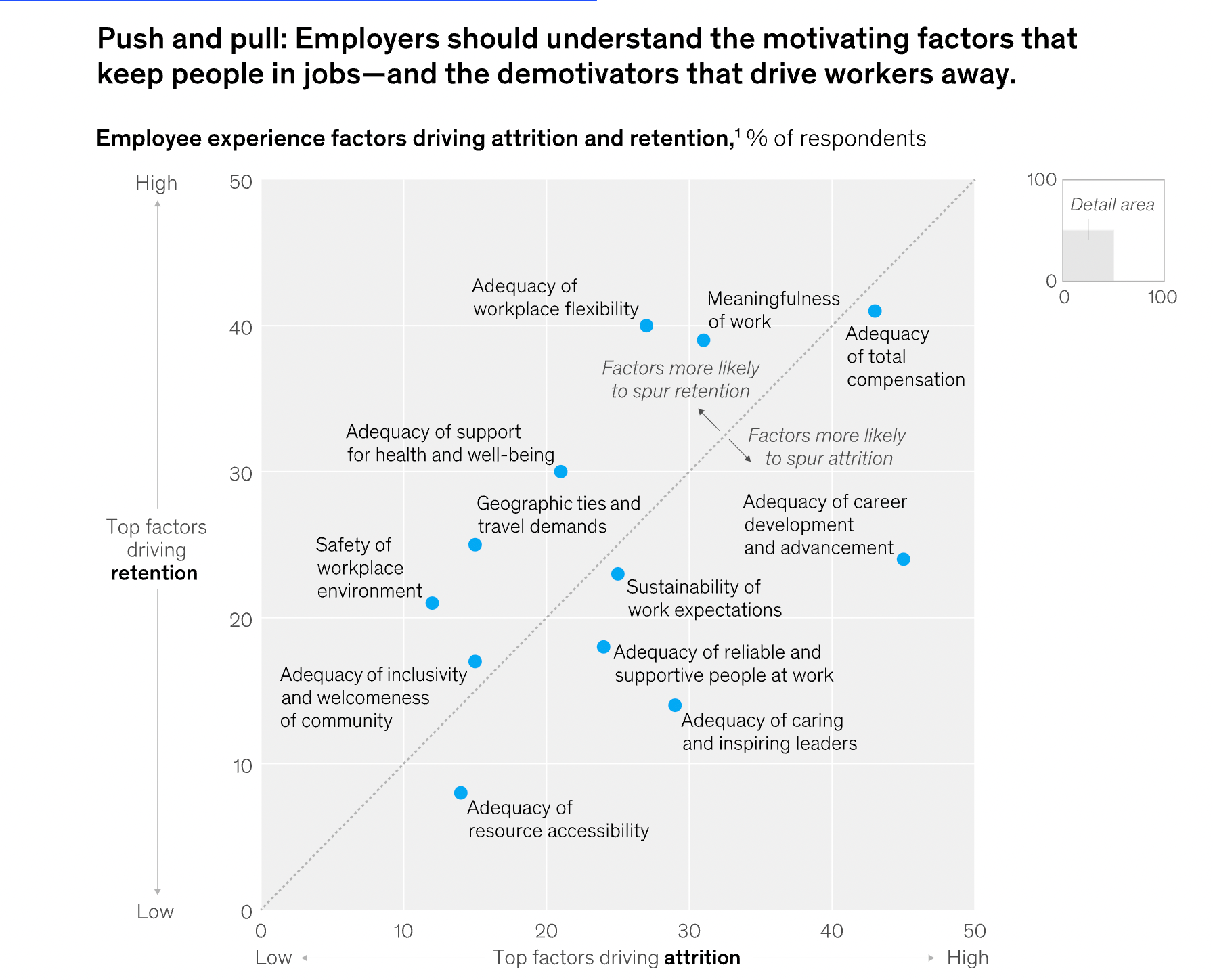
2. Poor onboarding process leaves new employees disenchanted
If new hires quit without an obvious reason, your hiring process and/or onboarding flow might be to blame. It all starts with the candidate experience during the hiring process:
- A dragged-out, overly complex hiring process might make new hires feel mentally exhausted by the time they get the offer. Naturally, they are less excited about the new professional journey and have less energy to invest in onboarding themselves to the new role.
- Over-indexing on interviews or past experiences during the hiring process can misinform your hiring decisions. Often, new employees leave because they realise the job isn’t the right fit for their skills or isn’t what they signed up for. Worse than that, two months in with the new hire, you might realise you have recruited the wrong person.
It takes 3-6 months for new employees to get their bearings and start meaningfully contributing to initiatives or driving new projects. Losing employees within the first few months is expensive: recruiting and onboarding costs, coupled with the lost time factor, are just some of the invisible consequences of low employee retention.
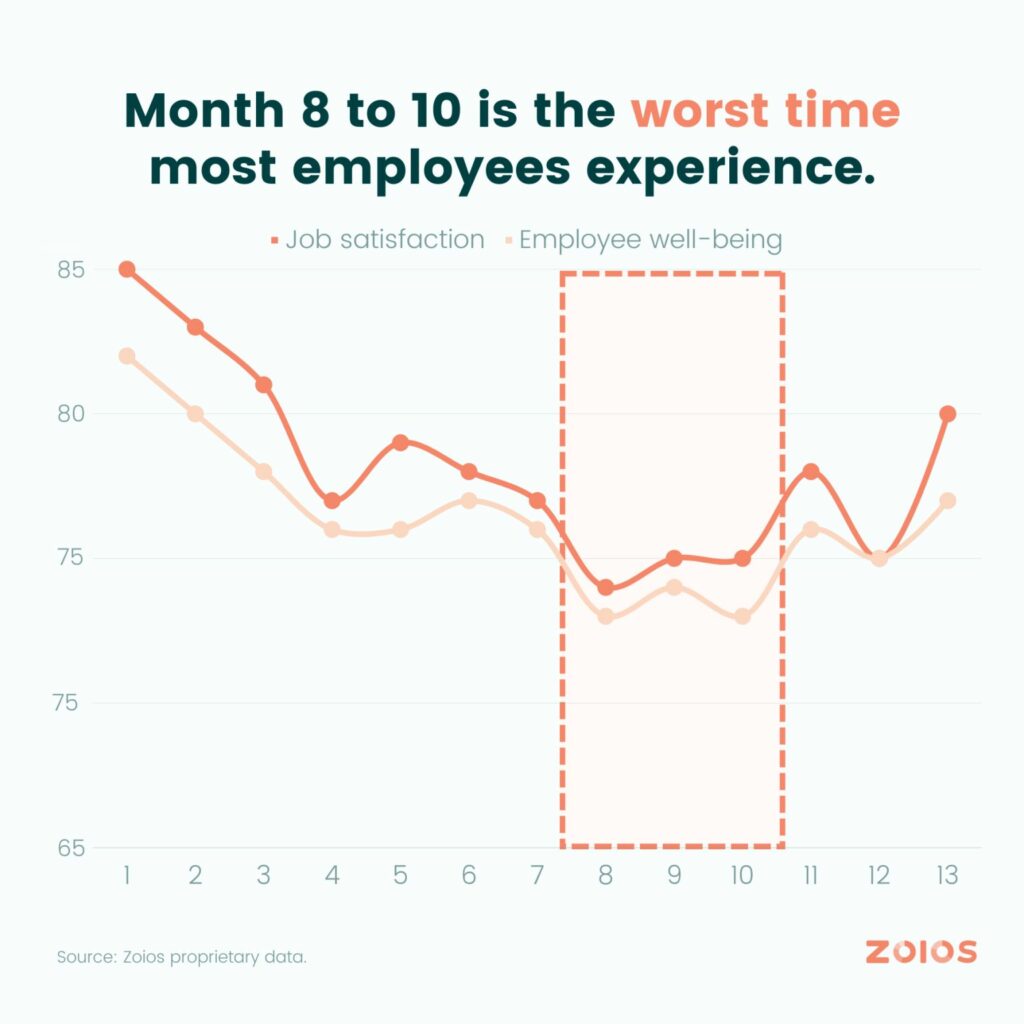
3. Poor manager(s) are driving top talent crazy and away
If there’s a high turnover in a specific department within a given time frame, the reason for the high turnover could be found in poor management. As a famous saying goes – people don’t quit jobs; they quit bosses.
If someone in your company is giving your employees a hard time, they could be the driver behind high turnover rates.
4. Your employees feel underpaid
One of the most common reasons employees quit is because it’s lucrative.
According to research, leaving a position and starting in a new one results in a salary bump of up to 15%. On the other hand, salaries, in general, are growing so slowly that a raise as big as this one could take years to accumulate.
Poor salaries and no room for growth are a killer combination for turnover rates. Make sure to stay in the loop regarding wages in your industry and promote top talent regularly.
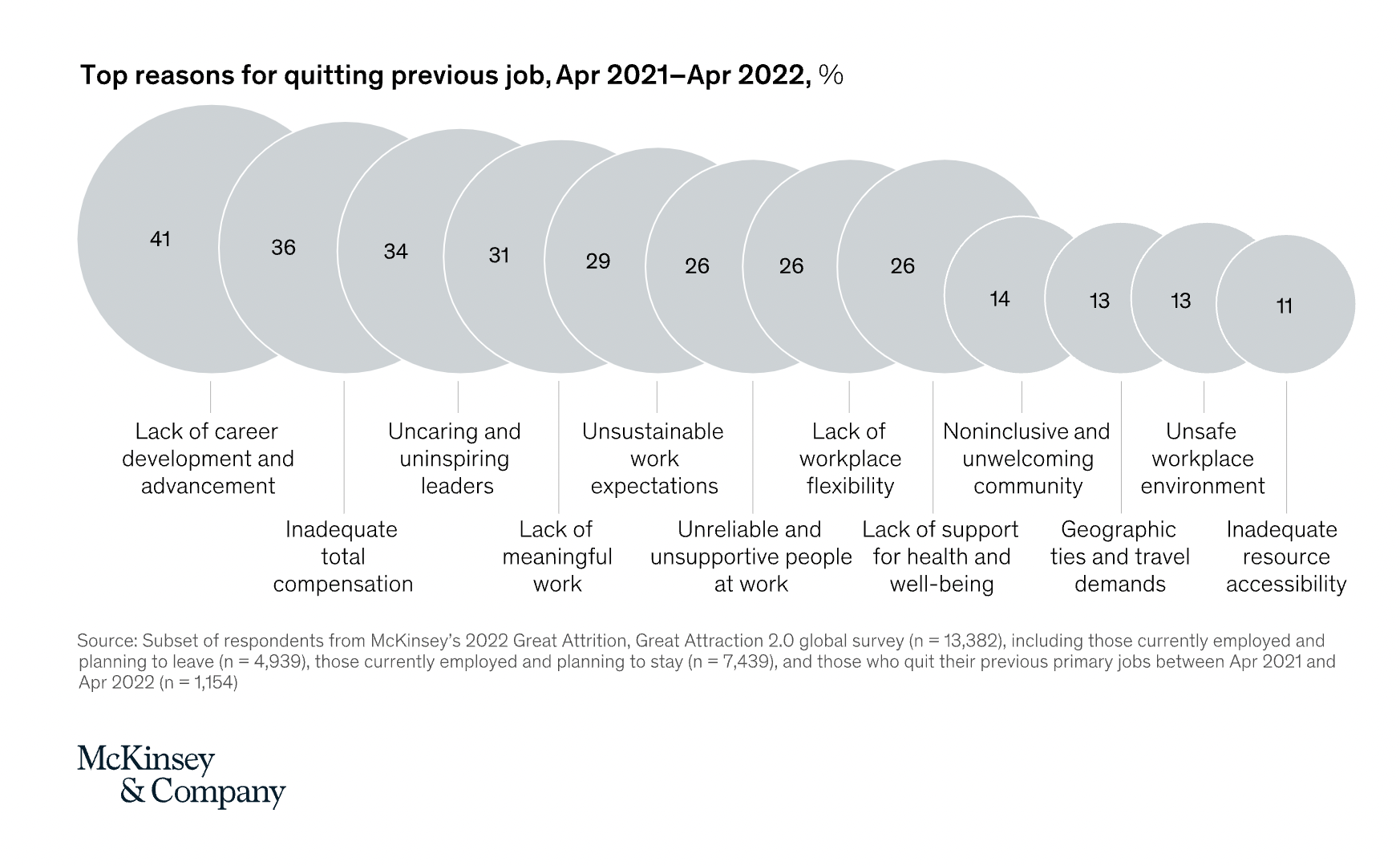
5. Company culture doesn’t support work-life balance
Besides making delicious candy, the brand Hershey also created an attrition model that can accurately (up to 87%) predict how likely an employee is to leave the company. They used a range of factors to come up with a formula, and one of them included external factors.
As it turns out, having long commutes to work makes employees more likely to quit their jobs. If this sounds obvious, wait for the kicker. Working remotely also makes employees more likely to leave… Having face time with coworkers and managers increases the overall employee experience and engagement and decreases the chances of leaving the job.
The takeaway is that when hiring traditionally, make sure the commute does not take a toll on your workforce. If hiring remotely, put a strong emphasis on building a positive culture and team so that your remote employees don’t feel left out.
6. Employee engagement is an afterthought
Let’s say you pay your employees well, give them regular promotions, and ensure their management is excellent, but there’s still something missing, and they feel left out. It’s simple – they’re not engaged.
Employees not actively participating in their work and company processes are more likely to quit. But how bad is it, really? According to Gallup research, only 32% of the workforce in the USA feels engaged.

According to the same research, engaged employees fare much better in the workplace and are more satisfied with their jobs overall. What’s more, they are:
- 27% more likely to grade their job performance as excellent
- 59% less likely to look for another job within the upcoming year
- 42% more likely to high-grade their overall lives
As can be seen, engaged employees feel better about their work, well-being, and lives.
Conclusion: a low employee turnover should be your North Star metric
A high turnover rate could significantly damage your business, leaving you short of great people and costing ludicrous amounts to re-fill those positions. By staying alert at all times and keeping track of this number, you are ensuring a happier, more engaged workforce that does not intend to change employers any time soon.
To reduce employee turnover, stick by these simple rules:
- Calculate employee turnover and monitor the reasons behind it religiously
- Make employee retention one of the success metrics for your business
- Review salaries regularly – it’s cheaper to promote and retain talent than hire new people
- Ensure your top employees have a clear career path
- Take employee performance management seriously – it’s a way for employees to continue learning and developing within their roles
- A great employee experience can be many things – find out what your workforce craves
- Use HR software like Toggl Hire to recruit the right people in the first place
Juste loves investigating through writing. A copywriter by trade, she spent the last ten years in startups, telling stories and building marketing teams. She works at Toggl Hire and writes about how businesses can recruit really great people.





